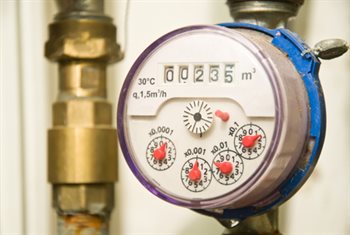
An acceptable well flow rate is determined by a number of factors. An average family will find that a rate of 5 gallons per minute, or gpm, is sufficient for all their needs. If they practice water conservation then a rate of 3 gpm would suffice. A large family might need up to 10 gpm. Even a small family of homesteaders that irrigates its own vegetable garden might easily need up to 20 gpm at times. A well with a low flow rate not only causes difficulties with daily life, but is at risk of suddenly losing even that on a seasonal or permanent basis if conditions change.
If your well's flow rate is not where you want it to be, then you have several options. The simplest to implement is to purchase and install monitoring well supplies and adhere to water conservation restrictions. The monitoring equipment will allow you to keep a close eye on water levels, so that you can time your water use to coincide with the highest flow rates. It will also allow you to anticipate a dangerous drop in water levels before the problems get too bad.
However, restrictions like these can be difficult to live with over long periods of time. It's a good idea to check the pipes, to make sure that there aren't any leaks or clogs. If the well is old then there is a good chance that roots and frost heaves have cracked or even infiltrated one or more of the pipes. Taking care of these problems can be done by installing a well screen, for example, and could be enough to bring your flow rate up to where you need it.
If neither of these measures is sufficient, it is always possible to install reservoir tanks that fill continuously from the well. This uses 100% of the well's resources. The drawback with this approach is that it can be expensive to install such a system, and it can take up a lot of space as well. Consult with your PVC Plus experts to find out if it is the right solution for you.
The most reliable way to ensure adequate flow rate is to increase your well's artesian pressure. It has proven possible to increase pressure and flow rate in over 90% of all residential wells through the process of hydro-fracking. This safe, effective procedure involves drilling down into the well hole and injecting it with high pressure natural drilling fluid: water.
Water flows through large sections of the water table by means of fractures in underground rock formations. The number and size of these fractures determines the flow rate that reaches your well. When high pressure water is pushed into these fractures it opens them up slightly. It forces new fractures into the rock that had not been there before. The net result is that a lot more water starts reaching your well at the same time, increasing pressure and flow rate. The procedure is all natural: it uses only well drilling supplies and water. The effect is permanent. Once you perform the procedure, your pressure remains high.
Hydro-fracking is a more reliable method than simply sinking another well. Hydro-fracking improves the flow capacity for the entire local water table. Drilling a new well, on the other hand, might or might not hit a good spot. The well might be dry, or it could siphon water out of your existing well, giving you no net benefit. A new well is a costly gamble. If you want more water, or a more reliable flow, your best bet is increasing your well pressure. It is cheaper and more reliable than most other methods.